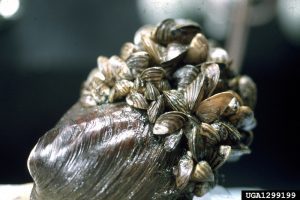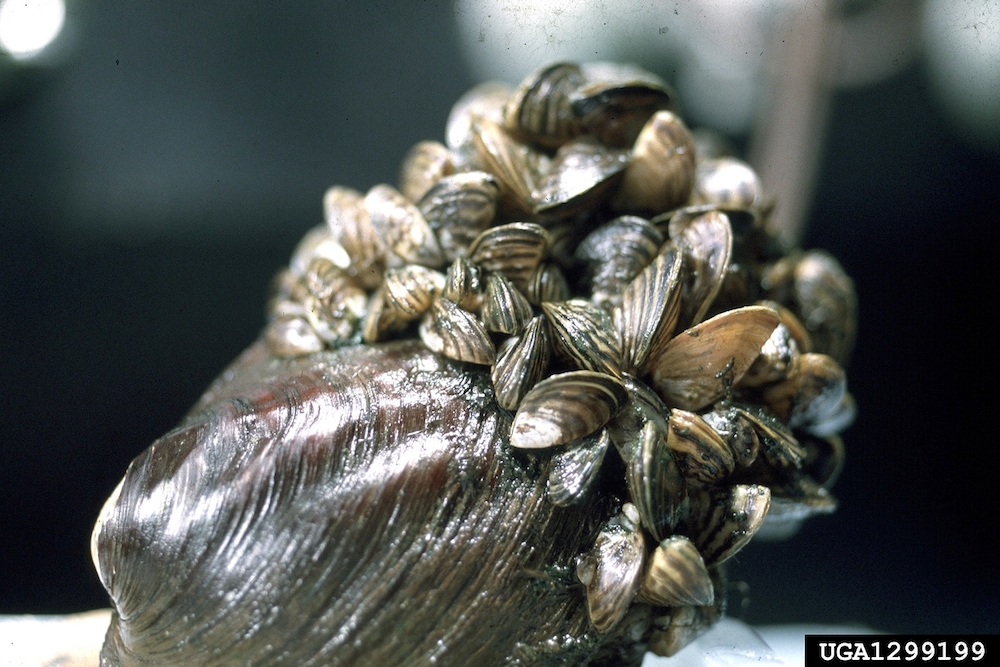From the Invasive Mussel Collaborative:
FOR IMMEDIATE RELEASE November 29, 2018
Contact: Beth Wanamaker – 734-396-6082, beth@glc.org
Invasive Mussel Collaborative releases new strategy to reduce invasive mussels and their negative impacts
Ann Arbor, Mich. – The Invasive Mussel Collaborative announced today that it has released a new strategy to reduce invasive mussels and their negative impacts. The Strategy to Advance Management of Invasive Zebra and Quagga Mussels is intended to drive investments, policy, and research around invasive mussels across the Great Lakes region and beyond. Since their initial discovery in 1989, zebra and quagga mussels have had dramatic impacts on the Great Lakes ecosystem and economy, including changes to the food web, degrading fish habitat, interfering with drinking water systems and damaging tourism and recreation economies. Today, these mussels continue to spread to new water bodies across the U.S. and Canada.
“Despite the progress we’ve made over the last 30 years, more effective tools are needed to control and eradicate mussels to protect the Great Lakes and other bodies of water,” said John Linc Stine, commissioner of the Minnesota Pollution Control Agency and chair of the Great Lakes Commission, which coordinates the collaborative. “The Great Lakes Commission is proud to be a founding member of the Invasive Mussel Collaborative, one of our many efforts to bring the right people together to tackle the biggest issues facing the lakes. This strategy is an important step toward protecting our Great Lakes and the economic wellbeing of our states and provinces.”

Photo by Randy Westbrooks, U.S. Geological Survey, Bugwood.org
The spread of zebra and quagga mussels across North America, as well as recent advancements in the development of control methods, has generated significant interest in the management and control of these damaging species. The new strategy identifies research and management objectives to guide the development of effective control methods that can be used to restore impacted ecosystems.
“The Invasive Mussel Collaborative is pleased to present this strategy, which provides an opportunity for researchers, managers and others to better coordinate their activities and share lessons learned so that our efforts can have a more meaningful outcome for our region,” said Bob Lambe, executive secretary of the Great Lakes Fishery Commission, which is a founding member of the collaborative.
The Invasive Mussel Collaborative (IMC) was established to advance scientifically sound technology for invasive mussel control to produce measurable ecological and economic benefits. The founding members of the collaborative include the U.S. Geological Survey, the Great Lakes Commission, the National Oceanic and Atmospheric Administration and the Great Lakes Fishery Commission. IMC membership includes federal, state, provincial, and tribal agencies, non-government and private stakeholders, research institutions and other entities. The IMC supports communication and coordination, identifies management goals, prioritizes science needs and aligns science and management into a common agenda. The collaborative recently produced a video highlighting its work and launched a new website with resources for managers, researchers and other stakeholders. The Invasive Mussel Collaborative is funded by the Great Lakes Restoration Initiative through an agreement with the U.S. Geological Survey. For more information on the collaborative and its work, click here.


